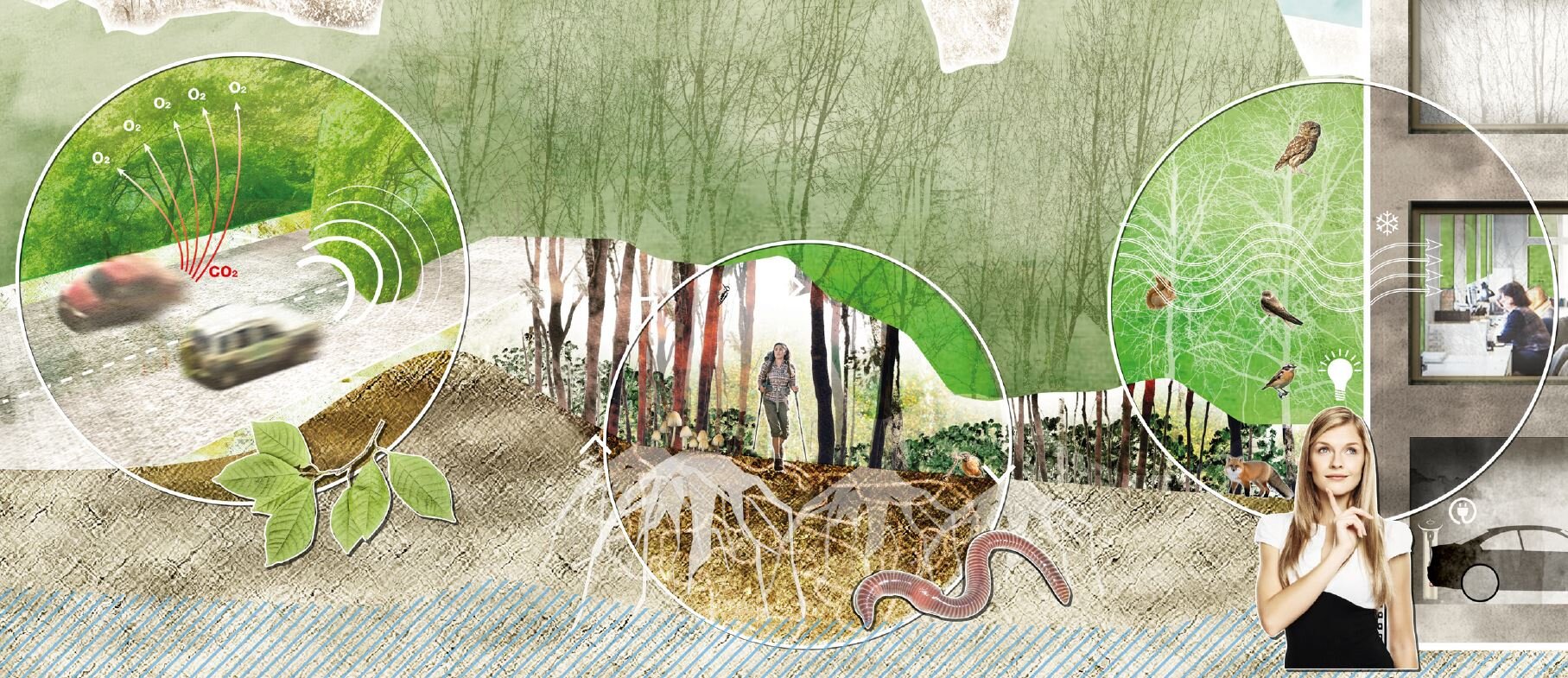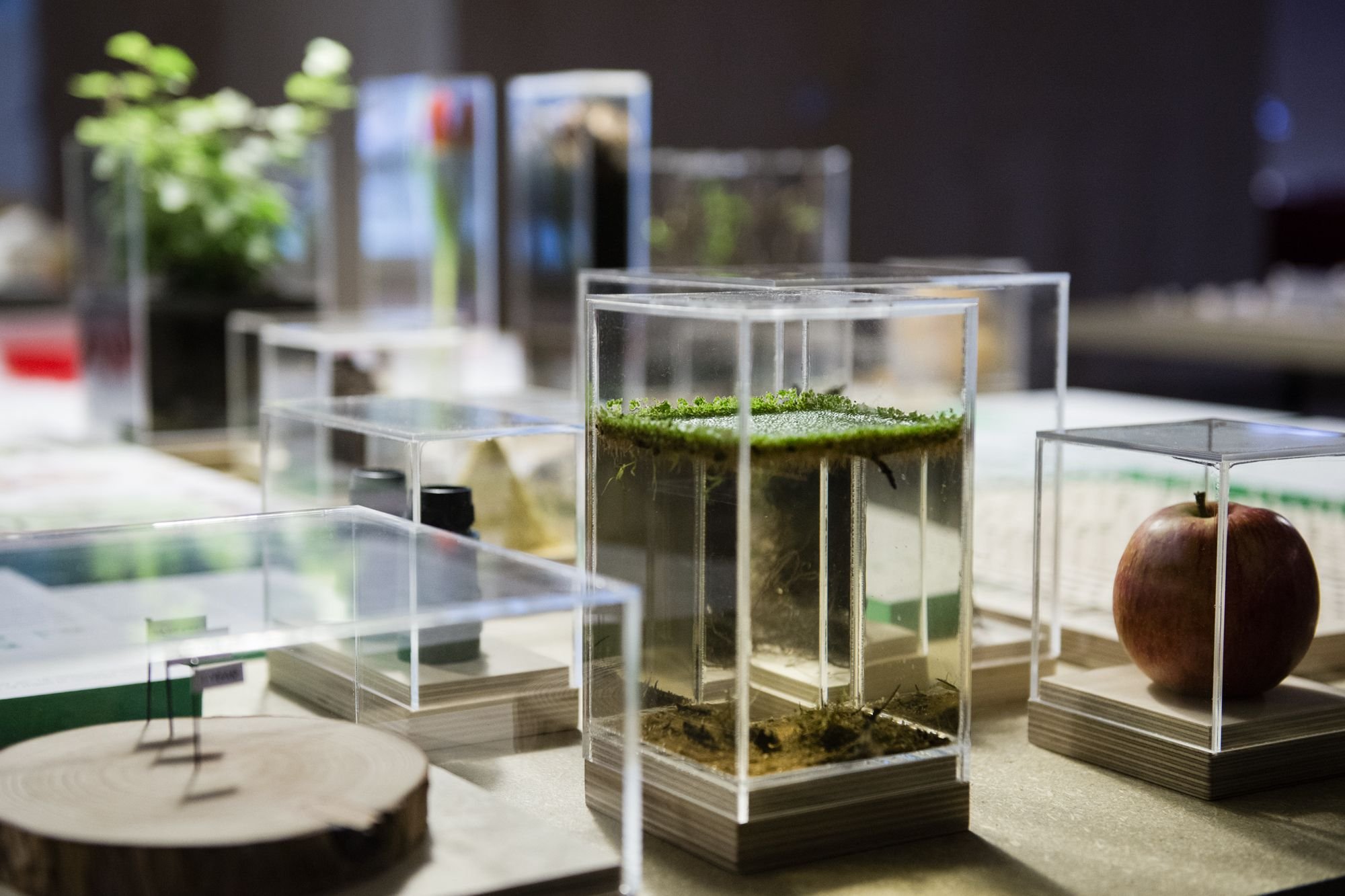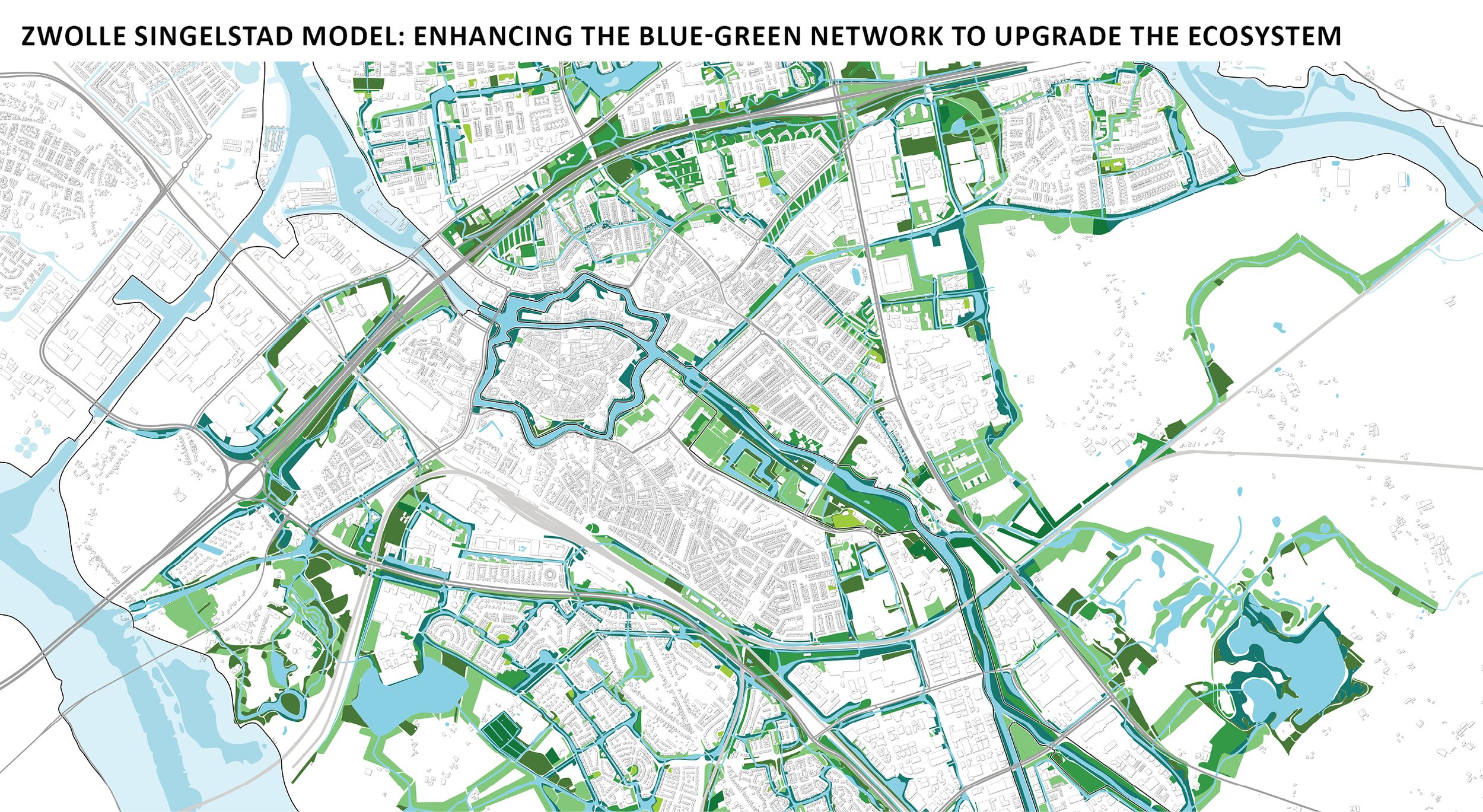
Good green is golden
Zwolle, the Netherlands
Location | Zwolle, The Netherlands
Year | 2015 - 2016
Client | CRa Board of Government Advisors, PBL Netherlands Assessment Agency, Ministry of Infrastructure and the Environment
Status | Research by design
Complete Research report
In Good Green is Golden De Urbanisten examined how green Zwolle -one of the greenest in the Netherlands- really is, based on valuing the ecosystem services the public spaces provide. Next, we explored how its public space can be upgraded into a rich green-blue network that maximizes the provision of ecosystem services for the city, whilst simultaneously supporting its urban agenda.
“Good Green is Golden” proposes a reinterpretation of urban green-blue networks as infrastructural systems where traditional values of public space are combined with green values in ecosystem services. There is an increasing necessity to deal with an excess or lack of water, the improvement of air quality, establishing an optimal temperature range and the sustainable consumption of resources, as services in our cities. Here ecosystem services can play an important supportive role. Benefits of green-blue networks have always been present in our cities by providing the base for urban wellbeing, but now it is time to move a step further and also consider them as valuable quantifiable assets in our urban economies and integrate them into urban public space design.
The assets of green-blue networks are resources or processes that derive from natural ecological systems that are beneficial to the city and its inhabitants. These are called ecosystem services and they can be divided into four main service categories: regulating, provisioning, cultural and supporting. Ecosystem services can become an integral part of our urban public spaces, while at the same time serving relevant urban agendas like climate adaptation, water safety, healthy learning environments and urban growth.
The test case is the city of Zwolle. We examined how green this city -one of the greenest in the Netherlands- really is, based on valuing the ecosystem services its public spaces provide. Next we explored how its public space can be upgraded into a rich green-blue network that maximizes the provision of ecosystem services for Zwolle, whilst simultaneously supporting its urban agenda.
We set out to prove that well designed green areas have eco-system value. To prove this, we increased the amount of high quality green or ‘good green’ in the city within a system that can basically assess the economic output. To differentiate the output we introduced 3 different spatial conceptual models. Each model contributes in a different way to the cities urban agenda on themes like climate adaptation, water safety, healthy and learning environments and urban growth. We explore these contributions in thematic maps, illustrating the spatial impact of the green-blue network on the urban agenda per topic. Furthermore the impact has been quantified in euros added value, by applying a calculation tool called Teeb.stad. This is shown by illustrating some aspects of one of the models: ‘Zwolle Singelstad’.















